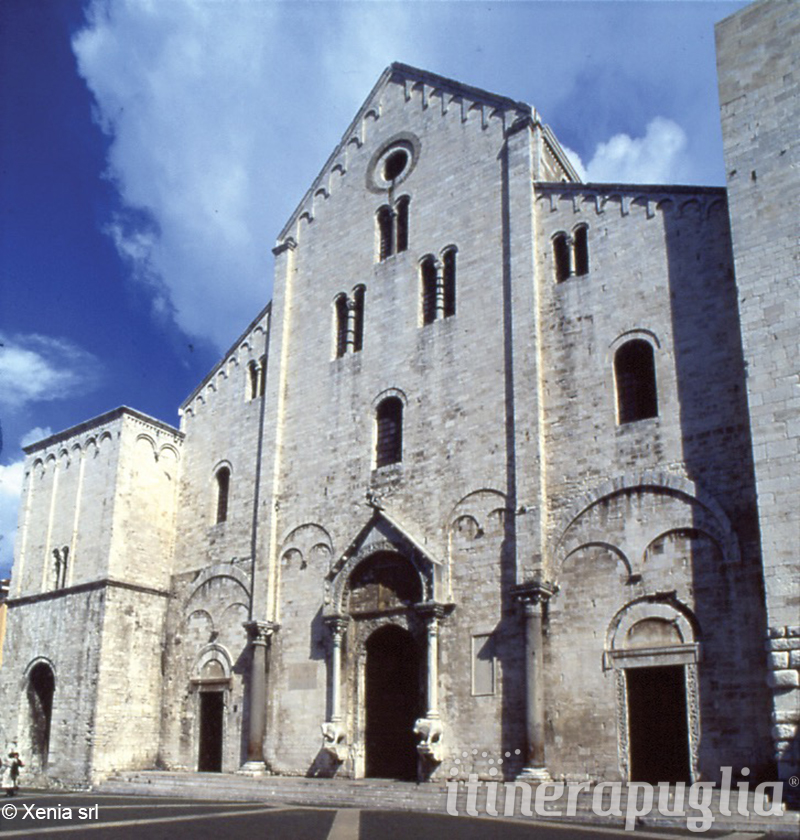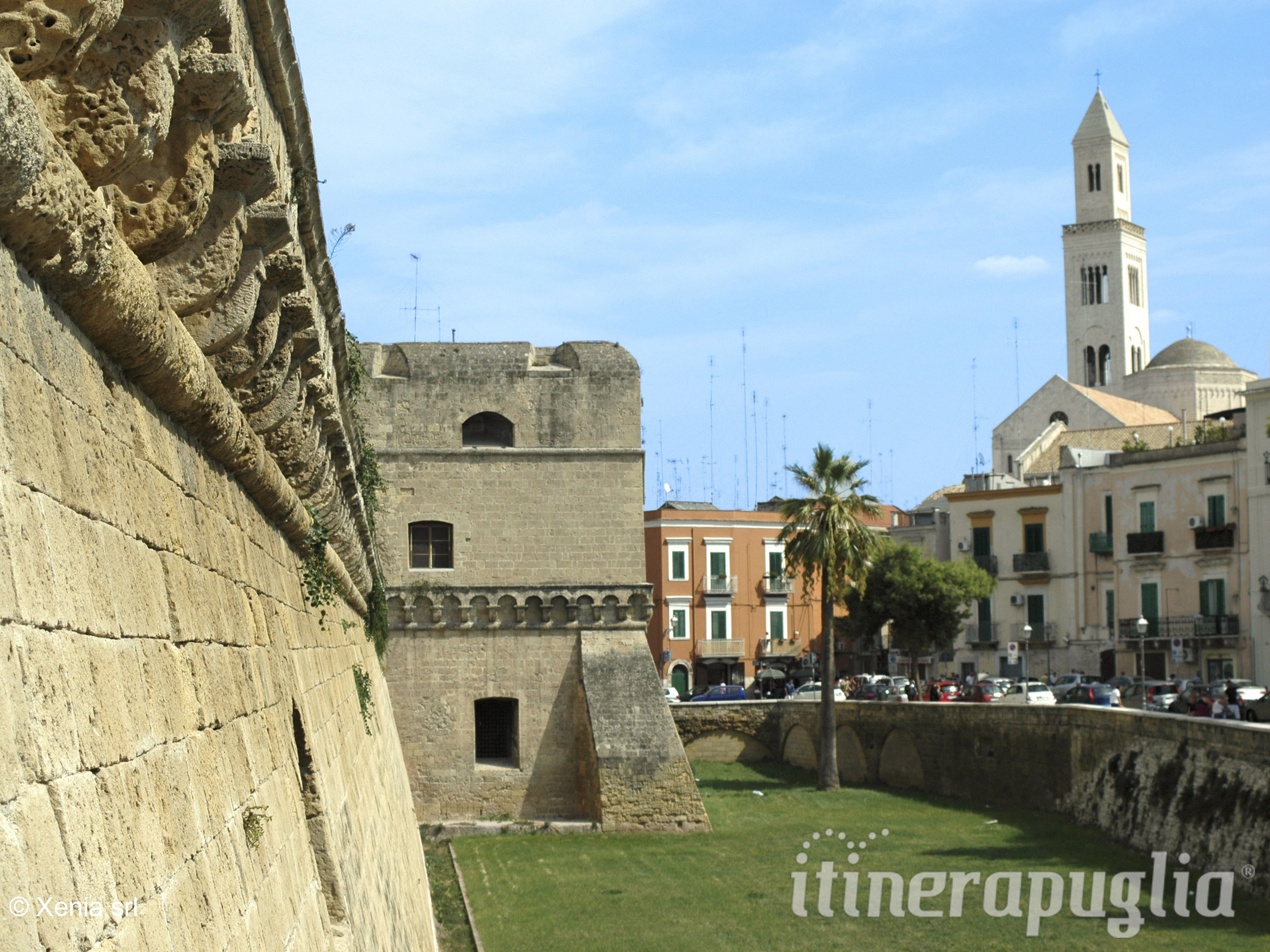A weekend in Bari
Bari lies along the southeastern Italy in a natural basin that the land formed between the Murge and the sea.
Historical crossroads of peoples, the city has witnessed a continuous movement of people who came with a valuable cultural contribution to the development of the community.
The city has experienced the Byzantine period, Norman, Swabian, Angevin, Aragonese and Murat, all this has left rich legacy that has given rise to three distinct parts: the old village, the nineteenth-century village, and the modern city.
 The old village consists of streets and houses leaning against each other so as to form the courts and to consolidate a better human relationship.
The old village consists of streets and houses leaning against each other so as to form the courts and to consolidate a better human relationship.
We can start the journey in the history of Bari starting from the Church of San Gregorio where conserve the magnificent statue of St. Nicholas sumptuously dressed.
The statue remains in the church of San Gregorio throughout the year and only for his feast is transferred to the great basilica of St. Nicholas.
The imposing basilica dedicated to the saint most beloved of Bari, located in the heart of the village, on the site of an earlier Byzantine temple, protected by a beautiful clear space which is the St. Nicholas Square.
The facade of the building, in candid blocks of limestone, is a delicate lace arches, mullioned windows and central portals manifest clearly Muslim and Byzantine influences both bind perfectly with the Apulian-Romanesque, the sides arise impressive two massive bell towers. The interior is breathtaking in its grandeur given by the splendid arches of columns that hold large women’s galleries.
The church has some unique pieces of medieval sculpture: a splendid ciborium 1150 with figured capitals, the episcopal chair known as the twelfth century Cathedral of Elia worked with a sophisticated technique to tunnel, the precious silver altar on the life and miracles of San Nicola and the valuable painted wooden ceiling of 1660.
The Matroneo guards the treasure of the church and finally in the crypt, features 28 original columns and vaults, lie the remains of the saint.
The basilica, along the Carmine road comes to the beautiful Cathedral of San Sabino which recognizes among other churches for the high bell tower; Byzantine era now looks like the result of countless renovations and restorations of various periods.
The tripartite facade is characterized by a rose window of Gothic ages and beautiful Baroque portals.
The interior was redone in style with fake women’s gallery and a pulpit, from the left aisle we reach the Trulla, the ancient baptistery which serves as a sacristy and retaining a Exulter, a precious Byzantine parchment of 1025.
Under the transept is the beautiful crypt covered with multicolored baroque marble.
From the cathedral, along dell’Odegitria square is Piazza Federico II of Swabia where stands the castle built on the site of an earlier Norman building.
The castle has its oldest part dating back to 1230-1240 trapezoidal plan and corner towers, the coating is a slope and with bulwarks to launches in 1500.
Do not miss a visit to the interior courtyard with Renaissance decoration and entrance atrium with cross vaults on columns with rich capitals and the beautiful carved door.
Spacious lounges are home to the collection of plaster casts, exhibitions and various cultural events.
 After visiting the most important buildings of the old town, you could wander aimlessly for the small streets of the village, enjoying the local specialties and admiring the many architectures that incontrerenno such as the medieval Church Vallisa in Piazza del Ferrarese, S . Pelagia in via Palazzo di Città, or the Church of Jesus and the church of Santa Teresa dei Maschi from the rich baroque facades.
After visiting the most important buildings of the old town, you could wander aimlessly for the small streets of the village, enjoying the local specialties and admiring the many architectures that incontrerenno such as the medieval Church Vallisa in Piazza del Ferrarese, S . Pelagia in via Palazzo di Città, or the Church of Jesus and the church of Santa Teresa dei Maschi from the rich baroque facades.
If we want time for shopping we have to go in via Sparano, road of the most elegant shops and the big names.
This is the way that leads us into the village said Murat, which follows the typical nineteenth-century checkerboard system.
Reach Corso Vittorio Emanuele II allows you to see the most interesting nineteenth century buildings: the Government Palace, the Municipal Theatre, Margherita Theatre, the building houses the Chamber of Commerce and the Petruzzelli theater.
Among the most important modern architecture we find the stadium of San Nicola, the main sports facility in the region, designed the work has been recognized for their artistic character and indisputable quality of architecture by the internationally famous architect Renzo Piano, for structural solutions and for distribution solutions to the steps. For the particular visual impact the work has also been dubbed by the same designer “The Spaceship”
The area surrounding the town preserves the precious historical and artistic treasures.
There are several rock settlements and the ancient fortified farms in particular, the Church of St. Candida near the creek Picone, this is the largest cave Basilica of the region, near the Carbonara area is the beautiful Church Street Martinez and along the way for Bitritto there is Masseria Milella.
In collaboration with Itinerapuglia




